Contents:
a) The Nature of the Contact
b) Main Rock Types
c) Inside the Batholith: Structures and Rock Types
d) Hbl-Granites: Anatexis of Gabbros
a) Nature of Contact
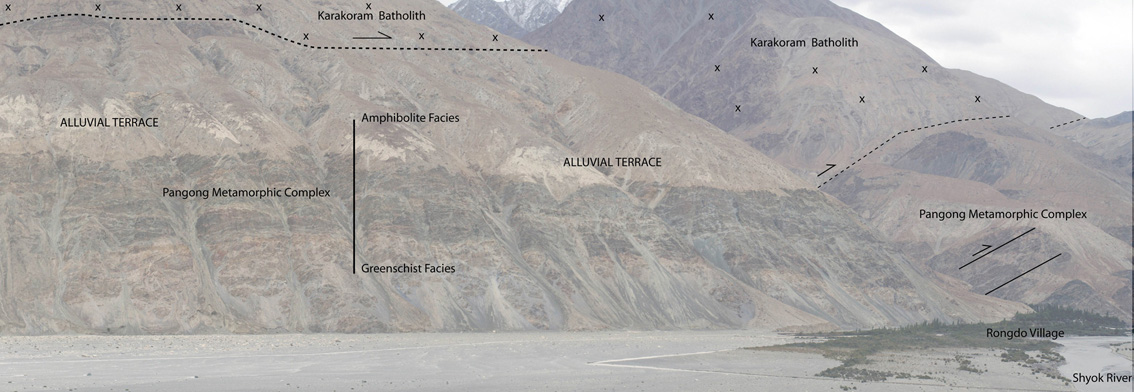
Figure 1. Contact between metamorphic rocks of the Pangong Range and
the Karakoram Baholith. The contact is partly
covered by alluvial material related to previous stages of evolution of
the Shyok valley. The contact is apparently dipping at low angle (~30
degrees) inwards to the
mountain (NE). The real contact however is ~60 degrees, and the gentler
planes are related to dextral-thrusts. The country rocks grade from
greenschist facties to amphibolite facies
as the contact with the Batholith is approached. The density of
intrusive sills/dykes increases markedly close to the contact. |
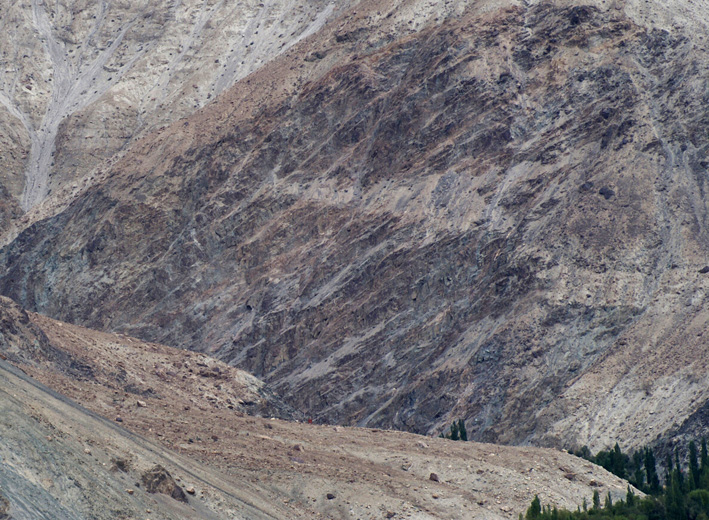
Figure 2a) Thrust planes on the wall SW of Rongdo village,
dipping ~30 NE. |
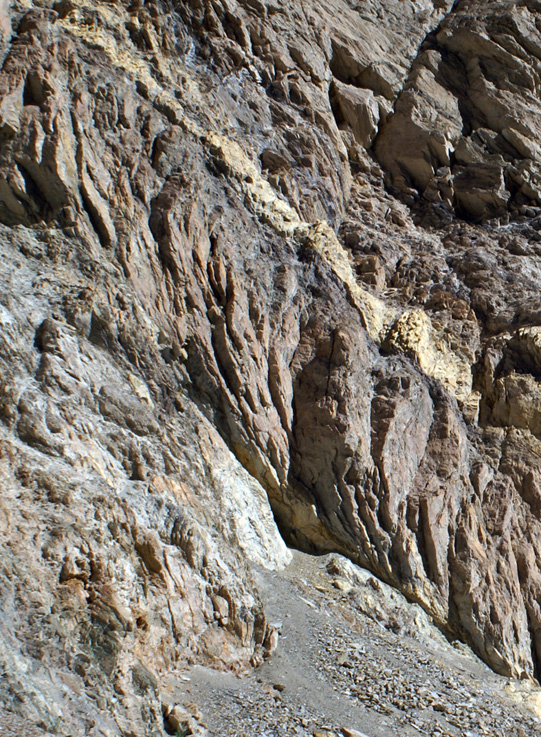
Figure 2b) Gently NE-dipping dextral thrusts on greenschist
facies rocks. Notice steep foliation in between thrust planes and a
late lamprophyre dyke intruding the thrust plane. Looking NW. See
lamprophyre dyke in Google Earth at N34 25' 16.5" E77 48' 53.2"
cross-cutting granite. |
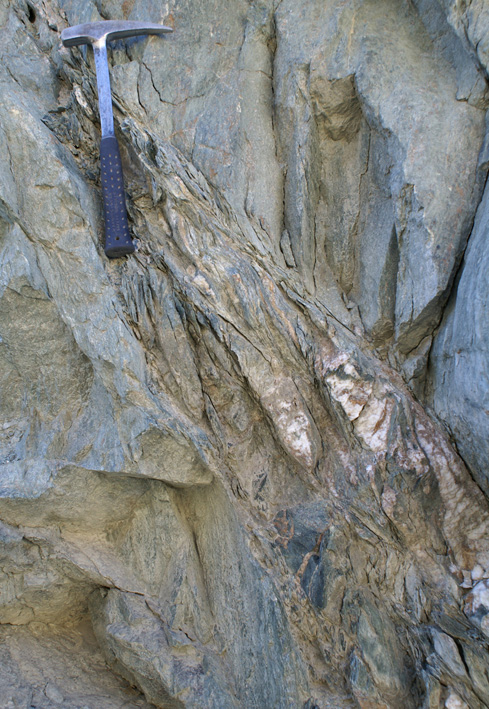
Figure 2c) Detail of a moderately dipping quartz-siderite
vein in
NE-dipping dextral-thrust.
|
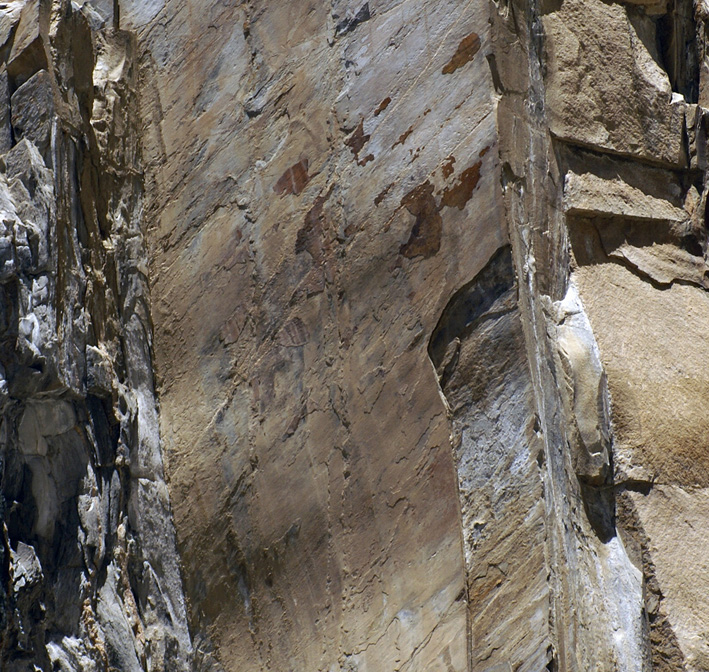
Figure 2d) Steep foliation is schist with a strong lineation dipping
gently NW, indicative of oblique dextral shearing pre-dating gently
dipping shear zones. |
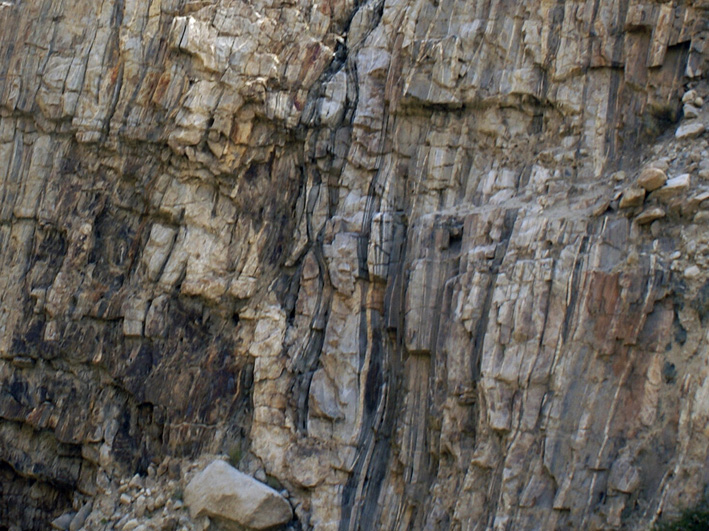
Figure 3a) Intense intrusions marking the contact with the batholith
and dipping steeply NE. Scale 100-200m in the vertical.
|
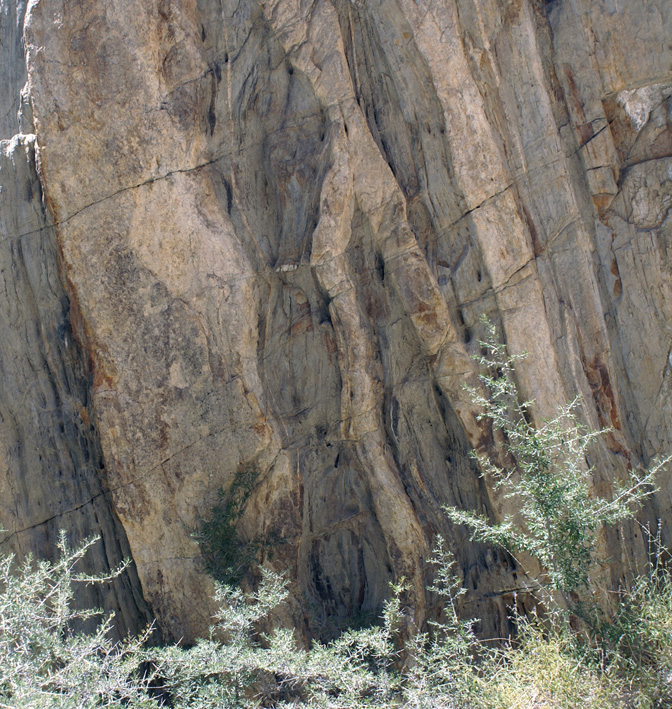
Figure 3b) Detail of intrusions (looking NW).
|
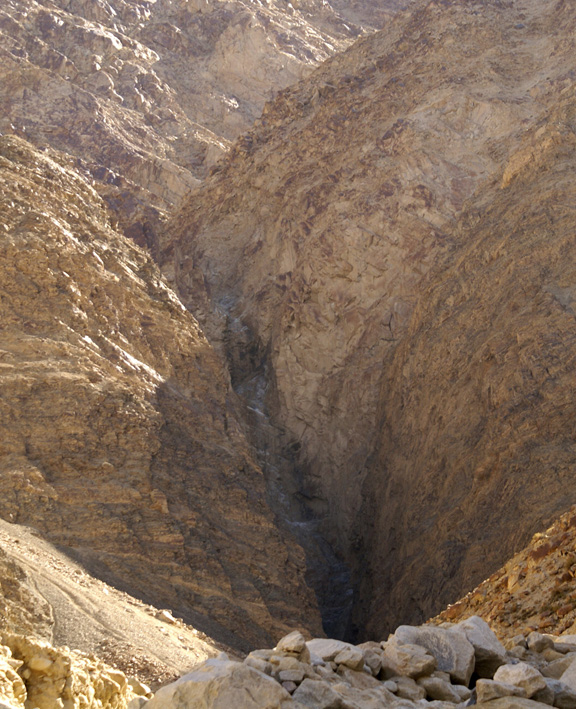
Figure 4a, b) Contact exposed in a valley NW of the Rongdo valley
approaching Satti. In all three valleys investigate (Satti, Rongdo and
this unnamed one) the contact is characterized by intense steepening in
the topography.
|

|
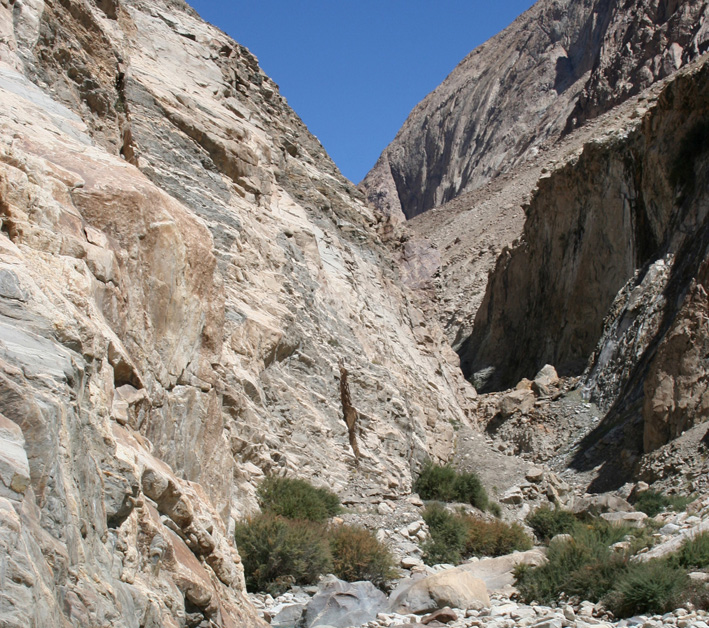
Figure
4c, d) Fracture zones that control the valleys that cut into the
batholith. |
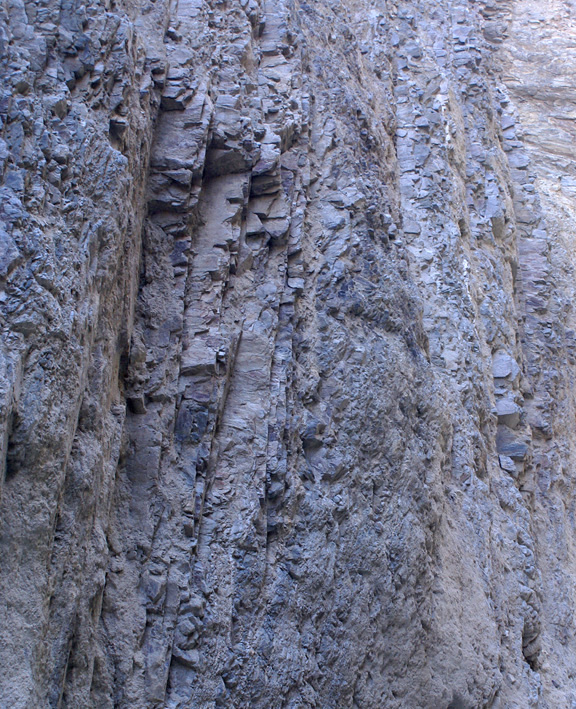
|
b) Main rock types: the bulk of the country rocks is comprised of
metamorphosed and sheared igneous rocks (diorites-granodiorites)
itnerpreted
to represent igneous rocks contemporanerous with the 80-60Ma Muglib and
Tirit calc-alkaline granitoids. These are interlatyered with
metasedimentary rocks (generally schists).
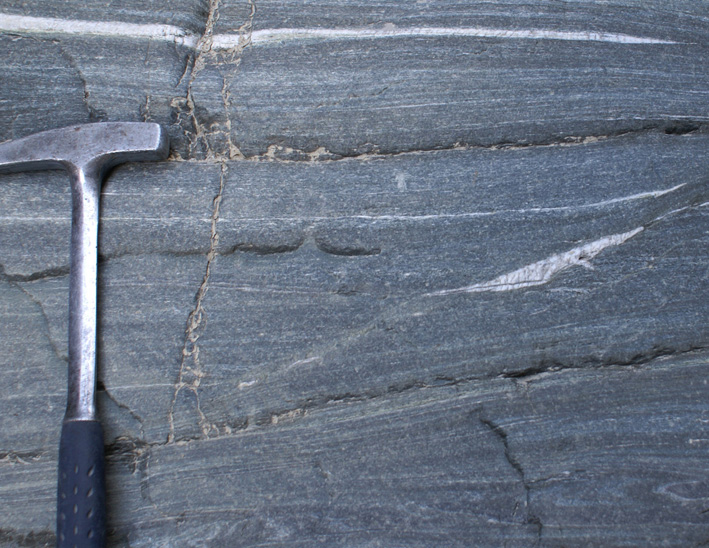
Figure
5a) Mylonitic, amphibolite-facies biotite and amphibole rich gneiss
itnerpreted to have been a diorite |
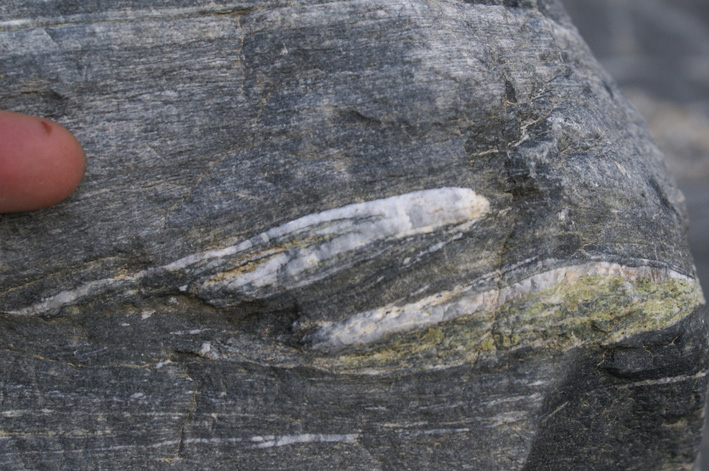
Figure
5b Mylonitic, and folded biotite-gness with epidote growth in the
vicinity of quartz veins. Asymmetry of folds indicate dextral
thrusting. |
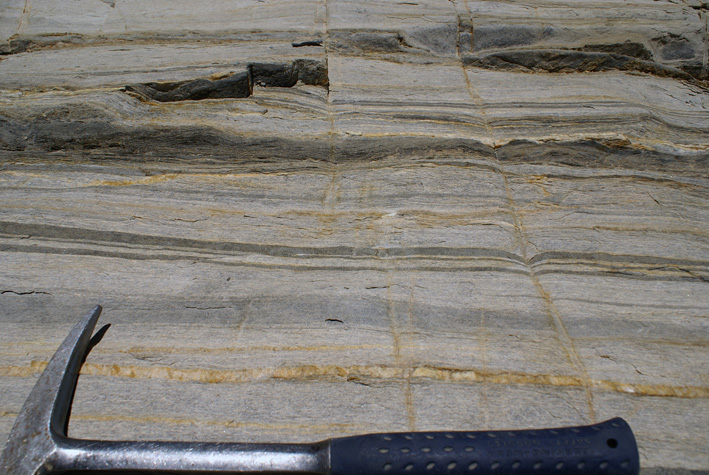
Figure 5c) Mylonitic, banded gneisses interpreted to represent a
deformed calc-alkaline intrusive sequence. |
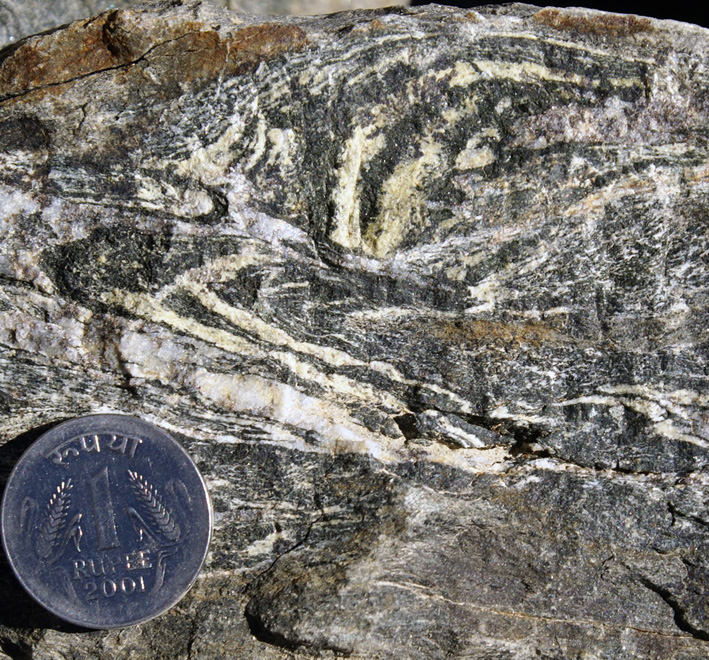
Figure
6a) Epidotized rock around folded quartz veins. |
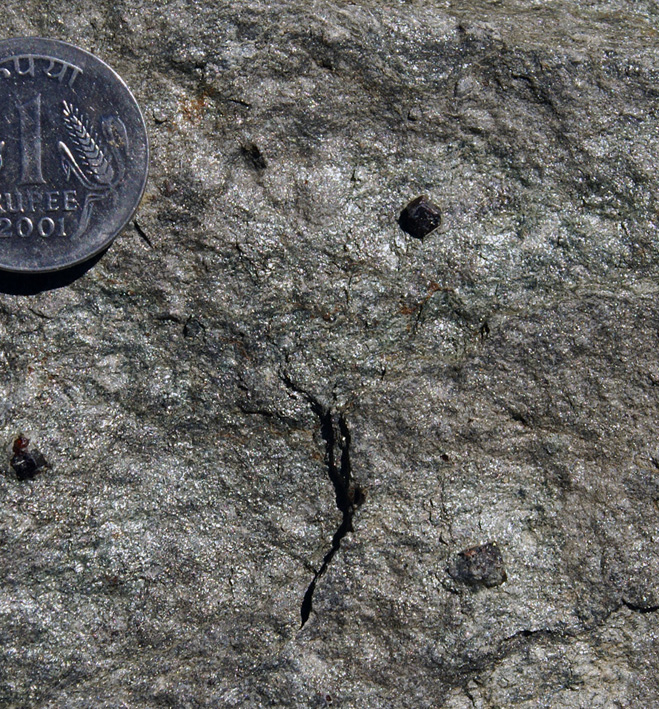
Figure 6b) Ms-schist with garnets in transition between greenschist and
amphibolite facies areas approaching the batholith contact. |
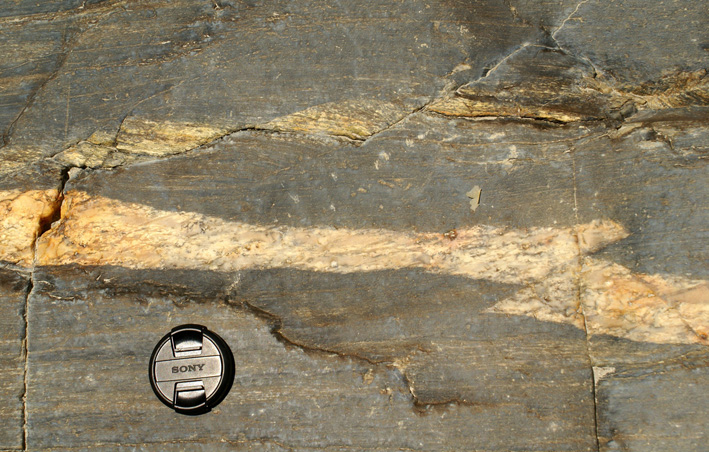
Figure
6c) Granite dyke folded and snapped during dextral shearing. |
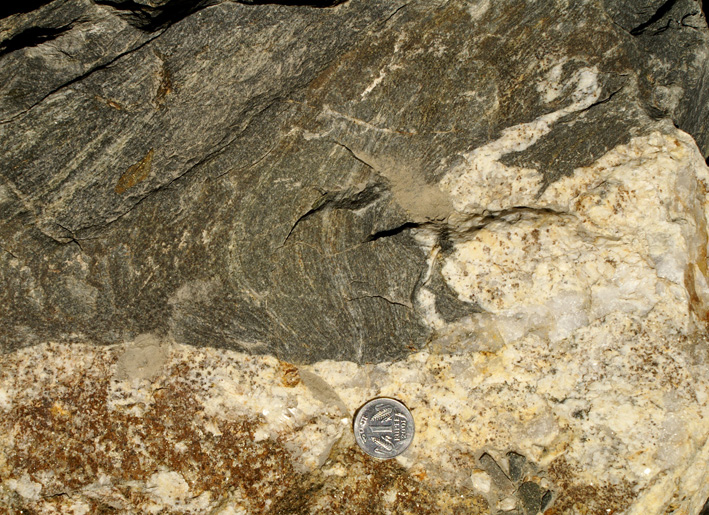
Figure 6d) Irregular contact between intrusive leucogranite and folded
gneiss. |
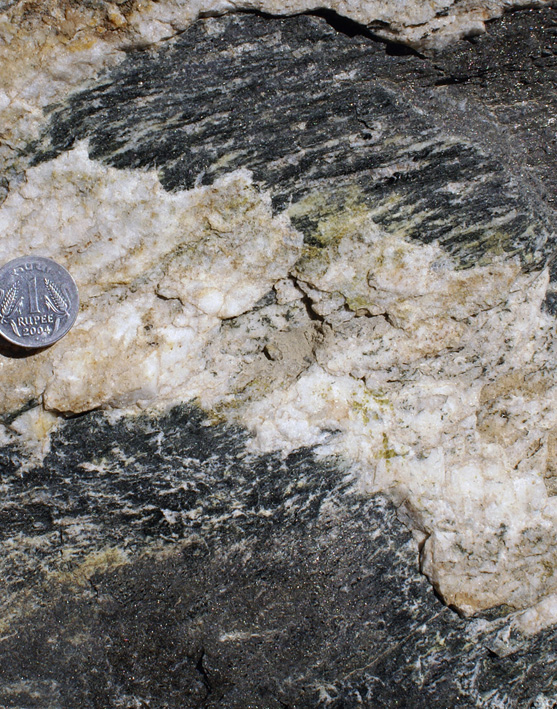
Figure
6e) Quartz vein in Bt-schist surrounded by an alteration halo
characterized by Hbl and Ep. This is in the transition between
greenschist and amphibolite facies and indicates that quartz veining
and fluid influx was associated with prograde metamorphism. |
c) Inside the Batholith: Structures and Rock Types
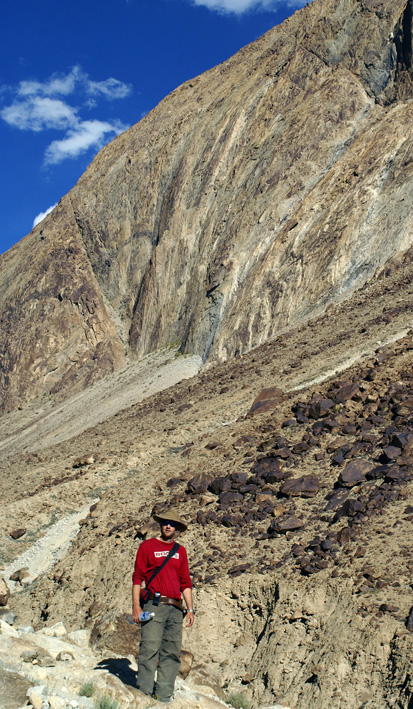
Figure
7a) Back thrust inside the batholith. Looking SE.
|
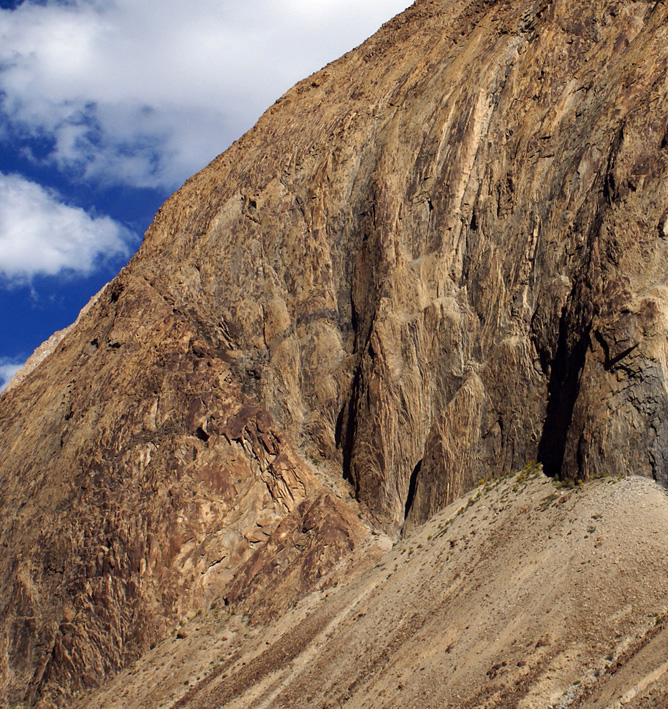
Figure
7b) Detail of (a). |
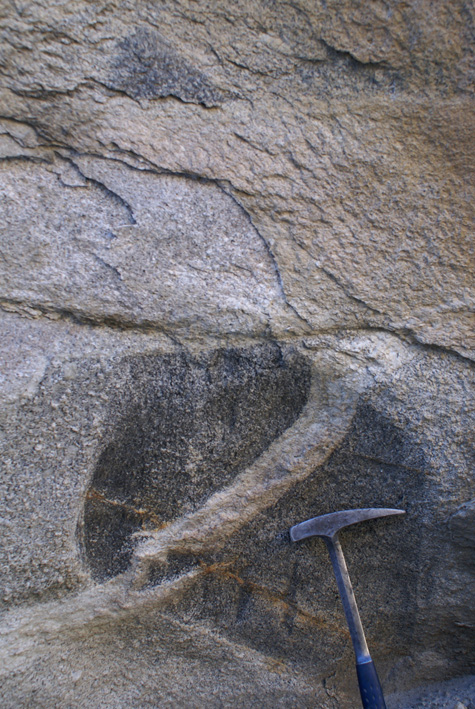
Figure
8a) PREPARE LINE DRAWING Granodiorite xenolith with mafic enclaves
(left of the hammer) cut by different phases of leucogranite. The
xenolith is interpreted as the older phase of calc-alkaline magmatism
contemporaneous with
the Ladakh Batholith to the S and to the Muglib and Tirit plutons both
along strike. Furthermore, this is interpreted to represent a preserved
version of the sheared/mylonitic country rocks to the batholith. |
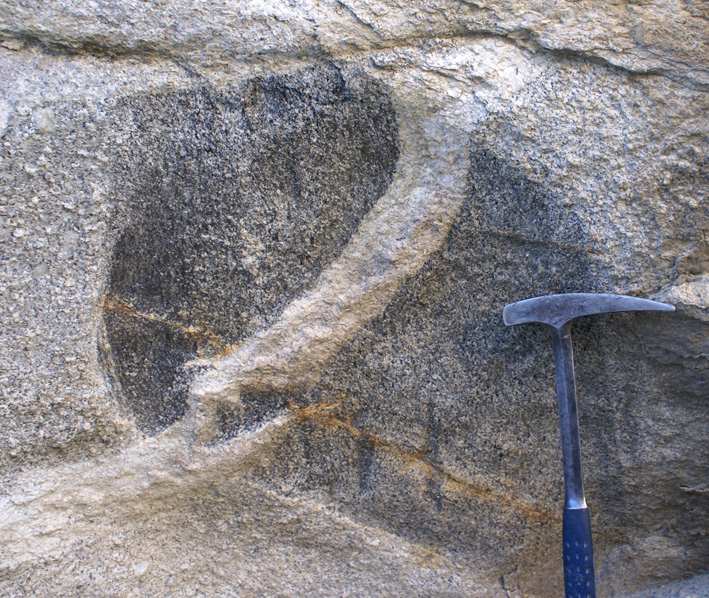
Figure
8b) Detail of (a). |
d) Hbl-granites: anatexis of gabbros.
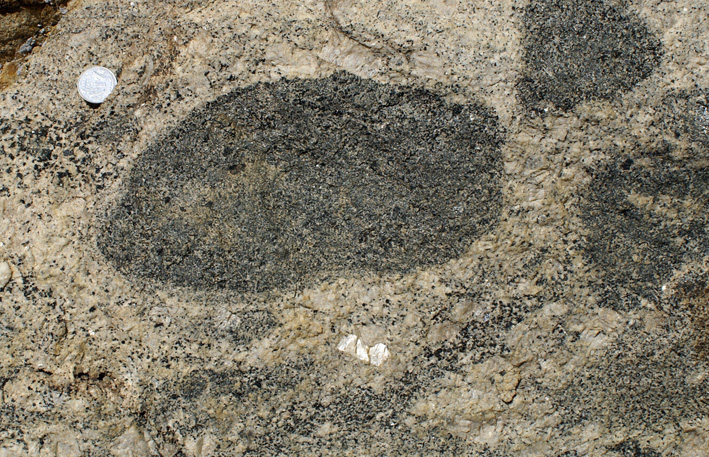
Figure
9a) Gabbroic enclave, rounded and surrounded by Hbl-rich leucogranite.
Enclave to the right is partly disaggregated by leucogranites, and
enclave on the left has porphyritic Hbl. Hbl-leucogranite
associated with gabbroic rocks can be related to anatexis of gabbroic
rocks of the Muglib batholith recorded in Tangtse-Muglib area. |
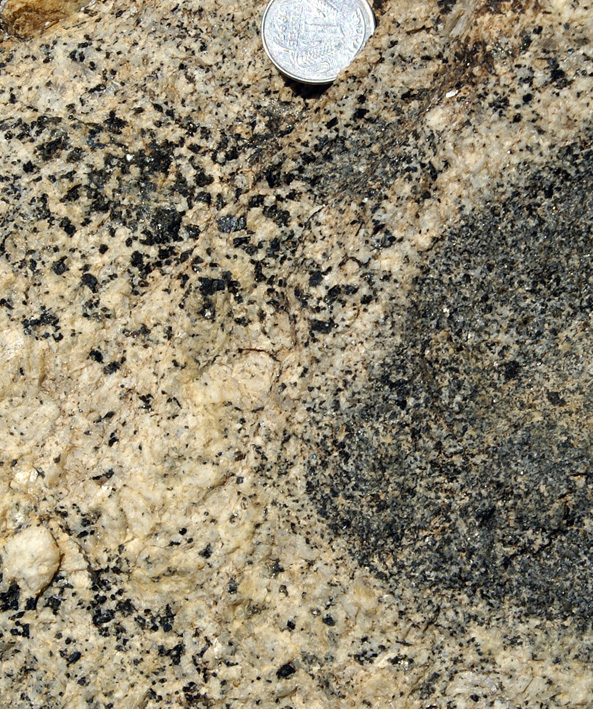
Figure
9b) Detail of (a). |
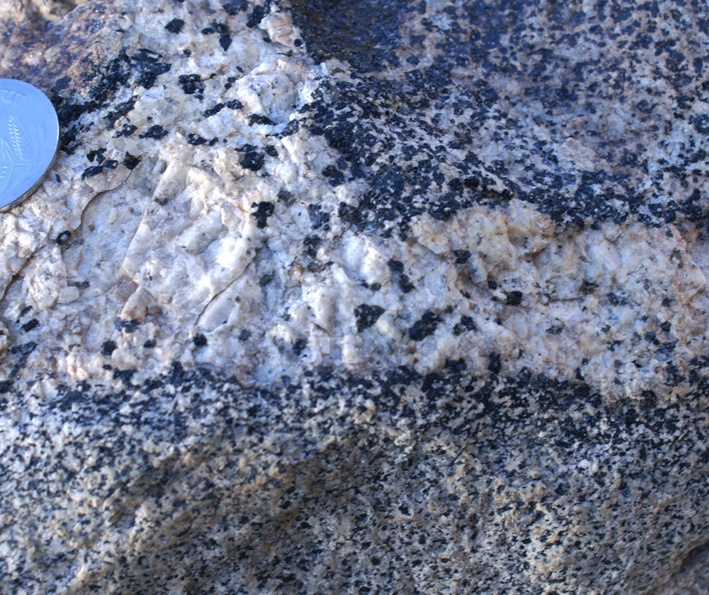
Figure
10a) Granite in contact with gabbro. Granite has large poikilitic Hbl,
whilst the gabbro generally with smaller Hbl, has a melanocratic layer
enriched in larger Hbl in contact with granite. Very similar
relations have been documented in Muglib during anatexis of gabbros. |
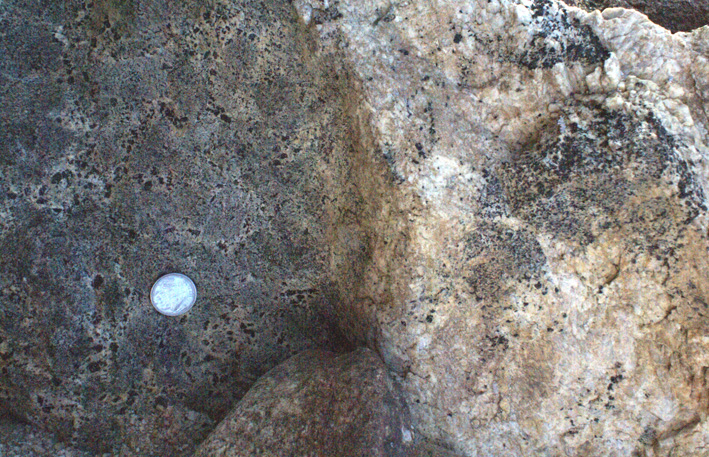
Figure
10b) Gabbro with leucocratic patches around Hbl porphyroblasts.
Leucocratic patches are linked continuously with the external
leucogranite. |

